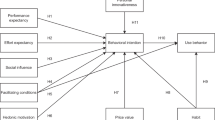Abstract
This study explores the research development pertaining to computer-mediated communication (CMC) in the field of computer-assisted language learning (CALL). The basic premise of this study is that language and consequently communication are essential elements of culture; thus, deep understanding of the role of technology in facilitating communication in online environments can deepen our understanding of the notion of culture and contribute to the specification of a universal design approach in culture-centered design. The authors applied a six-stage approach for conducting a systematic review of the research development in CALL between January 2009 and September 2010. This approach resulted in the development of the CALL map which consisted of 11 themes with which CALL researchers are concerned. This study focuses on CMC, a category which maintains its popularity for more than a decade, thus sustaining itself as a major area in the field. The review brings to the forefront key themes and findings of research in these areas, as well as core concepts emerging from the literature. The study discusses empirical findings and delineates how CMC can enhance language learning, concluding with possible future directions and implications for research and practice.


Similar content being viewed by others
References
Jagne, J., Smith-Atakan, A.S.G.: Cross-cultural interface design strategy. Univ. Access Inf. Soc. 5(3), 299–305 (2006)
Vatrapu, R., Suthers, D.: Culture and computers: a review of the concept of culture and implications for intercultural collaborative online learning. In intercultural collaboration, pp. 260–275. Springer, Berlin (2007)
Heimgärtner, R.: Intercultural user interface design-culture-centered HCI design-cross-cultural user interface design: Different terminology or different approaches? In: Marcus A (ed) Design, User Experience, and Usability Health, Learning, Playing, Cultural, and Cross-Cultural User Experience, pp. 62–71. Springer, Berlin (2013)
Evers, V.: Human–computer interfaces: designing for culture. Doctoral dissertation, Universiteit van Amsterdam (1997)
Levy, M.: Scope, goals and methods in CALL research: questions of coherence and autonomy. ReCALL 12(2), 170–195 (2000)
Parmaxi, A., Zaphiris, P., Papadima-Sophocleous, S., Ioannou, A.: Mapping the landscape of computer assisted language learning: an inventory of research. Interact. Technol. Smart Educ. 10(4), 252–269 (2013)
December, J.: Notes on defining computer-mediated communication. CMC Magazine, 4(1) (1997). Retrieved from http://www.december.com/cmc/mag/1997/jan/december.html
Hubbard, P.: Computer assisted language learning: vol. I. Foundations of CALL. Routledge, London and New York (2009)
Smith, B.: The relationship between scrolling, negotiation, and self-initiated self-repair in an SCMC environment. CALICO J. 26(2), 231–245 (2009)
Liaw, M., Bunn-Le Master, S.: Understanding telecollaboration through an analysis of intercultural discourse. Comput. Assist. Lang. Learn. 23(1), 21–40 (2010)
Kenning, M.M.: Collaborative scaffolding in online task-based voice interactions between advanced learners. ReCALL 22(2), 135–151 (2010)
Liang, M.Y.: Using synchronous online peer response groups in EFL writing: revision-related discourse. Lang. Learn. Technol. 14(1), 45–64 (2010)
Kenning, M.M.: Differences that make the difference: a study of functionalities in synchronous CMC. ReCALL 22(1), 3–19 (2010)
Bueno Alastuey, M.C.: Synchronous-voice computer-mediated communication: effects on pronunciation. CALICO J. 28(1), 1–20 (2010)
Yamada, M., Akahori, K.: Awareness and performance through self- and partner’s image in videoconferencing. CALICO J. 27(1), 1–25 (2009)
Sauro, S.: Computer-mediated corrective feedback and the development of L2 grammar. Lang. Learn. Technol. 13(1), 96–120 (2009)
Collentine, K.: Learner use of holistic language units in multimodal, task-based synchronous computer-mediated communication. Lang. Learn. Technol. 13(2), 68–87 (2009)
Guichon, N.: Preparatory study for the design of a desktop videoconferencing platform for synchronous language teaching. Comput. Assist. Lang. Learn. 23(2), 169–182 (2010)
O’Dowd, R., Waire, P.: Critical issues in telecollaborative task design. Comput. Assist. Lang. Learn. 22(2), 173–188 (2009)
Yilmaz, Y., Granena, G.: The effects of task type in synchronous computer-mediated communication. ReCALL 22(1), 20–38 (2010)
Jenks, C.J.: When is it appropriate to talk? Managing overlapping talk in multiparticipant voice-based chat rooms. Comput. Assist. Lang. Learn. 22(1), 19–30 (2009)
Peterson, M.: Learner interaction in synchronous CMC: a sociocultural perspective. Comput. Assist. Lang. Learn. 22(4), 303–321 (2009)
Sauro, S.: Strategic use of modality during synchronous CMC. CALICO J. 27(1), 101–117 (2009)
Smith, B., Sauro, S.: Interruptions in chat. Comput. Assist. Lang. Learn. 22(3), 229–247 (2009)
Uzum, B.: An investigation of alignment in CMC from a sociocognitive perspective. CALICO J. 28(1), 135–155 (2010)
Oskoz, A.: Learners’ feedback in online chats: What does it reveal about students’ learning? CALICO J. 27(1), 48–68 (2009)
Vandergriff, I., Fuchs, C.: Does CMC promote language play? Exploring humor in two modalities. CALICO J. 27(1), 26–47 (2009)
Murphy, P.: Web-based collaborative reading exercises for learners in remote locations: the effects of computer-mediated feedback and interaction via computer-mediated communication. ReCALL 22(2), 112–134 (2010)
Andrew, M.: Deepened mirrors of cultural learning: expressing identity through e-writing. CALICO 26(2), 324–336 (2009)
Basharina, O.: Student agency and language-learning processes and outcomes in international online environments. CALICO 26(2), 390–412 (2009)
Cheng, R.: Computer-mediated scaffolding in L2 students’ academic literacy development. CALICO J. 28(1), 74–98 (2010)
Kosunen, R.: Discussing course literature online: analysis of macro speech acts in an asynchronous computer conference. ReCALL 21(3), 337–351 (2009)
Hirotani, M.: Synchronous versus asynchronous CMC and transfer to Japanese oral performance. CALICO J. 26(2), 413–438 (2009)
Khamis, H.: Communication strategies in computer-mediated communication: an Egyptian EFL context. CALICO J. 28(1), 35–48 (2010)
Marcus, A.: Cross-cultural user-experience design. In diagrammatic representation and inference, pp. 16–24. Springer, Berlin (2006)
Author information
Authors and Affiliations
Corresponding author
Rights and permissions
About this article
Cite this article
Parmaxi, A., Zaphiris, P. Computer-mediated communication in computer-assisted language learning: implications for culture-centered design. Univ Access Inf Soc 15, 169–177 (2016). https://doi.org/10.1007/s10209-015-0405-4
Published:
Issue Date:
DOI: https://doi.org/10.1007/s10209-015-0405-4




